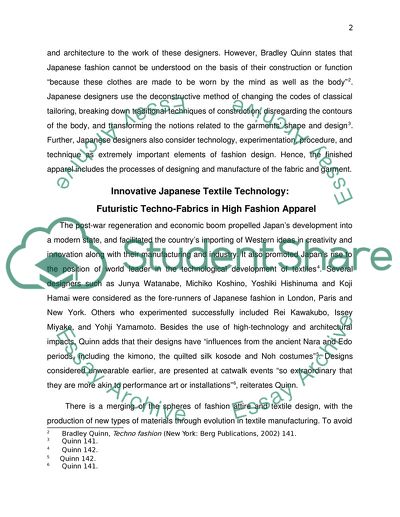Cite this document
(“Textiles, Design and Style in Japanese Fashion Research Paper”, n.d.)
Textiles, Design and Style in Japanese Fashion Research Paper. Retrieved from https://studentshare.org/design-technology/1767071-textiles-design-and-style-in-japanese-fashion
Textiles, Design and Style in Japanese Fashion Research Paper. Retrieved from https://studentshare.org/design-technology/1767071-textiles-design-and-style-in-japanese-fashion
(Textiles, Design and Style in Japanese Fashion Research Paper)
Textiles, Design and Style in Japanese Fashion Research Paper. https://studentshare.org/design-technology/1767071-textiles-design-and-style-in-japanese-fashion.
Textiles, Design and Style in Japanese Fashion Research Paper. https://studentshare.org/design-technology/1767071-textiles-design-and-style-in-japanese-fashion.
“Textiles, Design and Style in Japanese Fashion Research Paper”, n.d. https://studentshare.org/design-technology/1767071-textiles-design-and-style-in-japanese-fashion.


